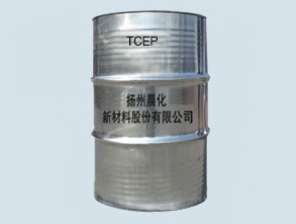There are many problems in the use of halogen-free flame retardant. However, only by understanding the causes and solutions can we solve the problems correctly. Some customers will think that the higher the concentration of halogen-free flame retardant is, the better the fire-retardant effect will be, and the higher the concentration of halogen-free flame retardant will lead to a certain degree of change in the flame retardant, so what should be done if the concentration of halogen-free flame retardant is too high in the use process? Now with the halogen-free flame retardant manufacturers to understand.

1. When the flame retardant (fabric, wood) is treated with high concentration of halogen-free flame retardant, appropriate amount of water can be added to reduce the concentration.
2. Shorten the treatment time of halogen-free flame retardant. Such as shortening the time of soaking fabrics and wood with halogen-free flame retardant.
3. Stop the treatment of flame retardant immediately and use low concentration halogen-free flame retardant to continue the treatment.
Flame retardant with good performance generally meets the following requirements:
1. It has high flame-retardant efficiency, which can easily make the flame-retardant materials reach the proper flame-retardant level;
2. It has little influence on the physical properties of the material, and the physical properties of the flame-retardant material manufactured after use should not be changed too much;
3. It has good compatibility with the material, can disperse evenly in the flame-retardant material, and has good affinity; 4. The processing technology is feasible, and the traditional technology can be used;
4. Affordable price, high cost performance ratio, and the cost of flame retardant material can be accepted by the market;
5. Environmental protection, non-toxic, no release of harmful substances.
Flame retardant is a common additive used to prevent or reduce the possibility of combustion of combustibles. The current market situation of flame retardant is as follows.
1. Inorganic flame retardants, such as magnesium hydroxide and aluminum hydroxide, are not only low-cost green environmental protection products, but also have low flame-retardant efficiency. It needs a high amount of additives to make the material flame-retardant. Moreover, the compatibility and affinity of inorganic flame retardants are poor, which greatly reduces the impact resistance of the material, or the flexibility of the material is lost. Therefore, they are often used for the mechanical properties of the material Used in less demanding situations.
2. Inorganic flame retardants, such as antimony trioxide and zinc borate, are often used as flame retardant materials, but their flame retardancy is mainly reflected in assisting other halogen series flame retardants, which have low or almost no self flame retardancy.
3. Environmental friendly flame retardants abroad, many of them also have high flame retardancy for corresponding materials, and can produce flame retardant materials with good mechanical properties and good appearance. However, the promotion in China is not very good at present, perhaps because of the price and technology.